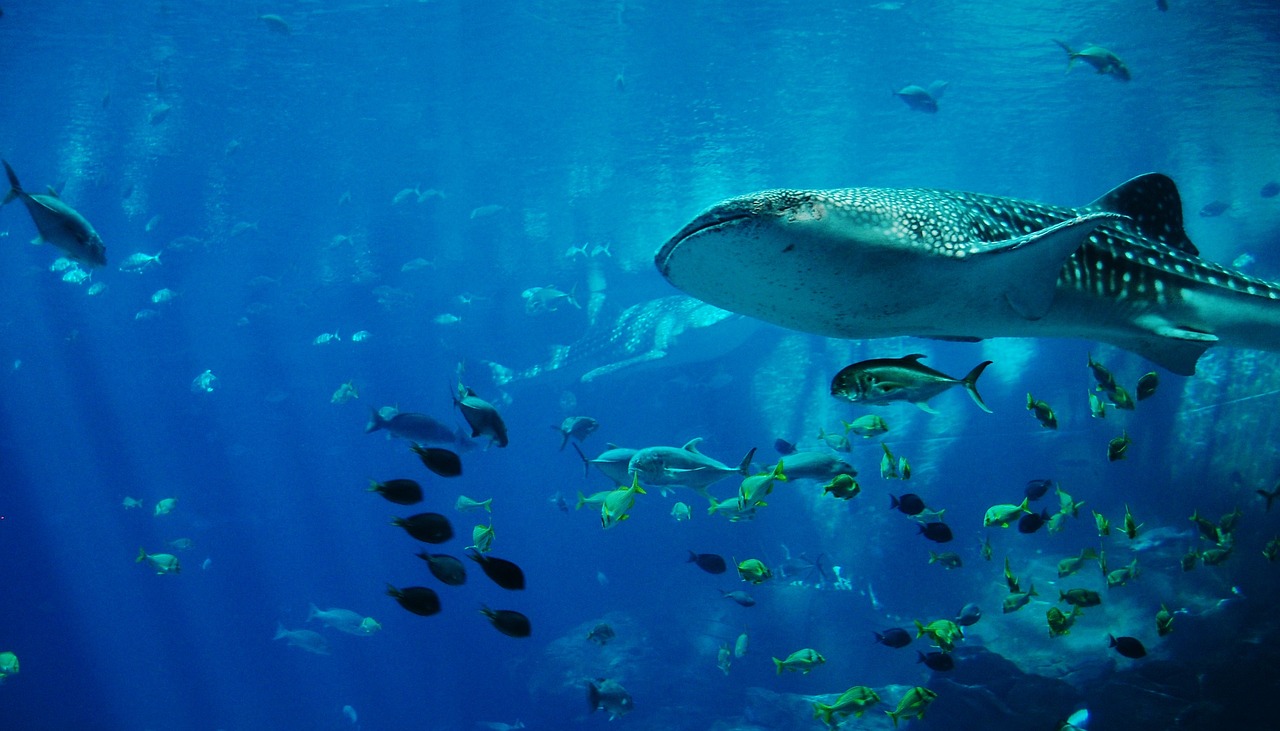The vast oceans that cover more than two-thirds of our planet are home to a mesmerizing array of sea animals. From the depths of the abyss to the vibrant coral reefs, these marine creatures showcase extraordinary adaptations and behaviors that continue to captivate researchers and nature enthusiasts alike.
Table of Contents
A Diverse Underwater World
1. Great White Shark
The iconic apex predator of the oceans, the Great White Shark, roams the world’s coastal and open waters. With its powerful jaws and incredible speed, this formidable hunter holds a position at the top of the marine food chain.
2. Bottlenose Dolphin
Known for their intelligence and playful nature, bottlenose dolphins are highly social and can be found in warm and temperate waters worldwide. Their acrobatic displays and communication skills make them a favorite among marine enthusiasts.
3. Clownfish
Among the most beloved reef inhabitants, clownfish are renowned for their vibrant colors and mutualistic relationship with sea anemones. Their unique ability to coexist with the anemone’s stinging tentacles provides them with a safe haven.
4. Giant Pacific Octopus
Hailing from the cold waters of the Pacific, the giant Pacific octopus is an awe-inspiring creature known for its intelligence and remarkable camouflage capabilities. They possess three hearts and are masters of problem-solving.
5. Blue Whale
The blue whale holds the title of the largest animal to have ever existed on Earth. These gentle giants can reach lengths of up to 100 feet and have a heart that weighs as much as a small car.
Adaptations for Life in the Ocean
1. Camouflage
Many sea animals, such as the octopus and cuttlefish, have the remarkable ability to change color and texture to blend seamlessly with their surroundings, providing them with excellent camouflage against potential predators.
2. Echolocation
Dolphins and certain whale species use echolocation to navigate and locate prey. They emit sound waves and interpret the echoes to understand their environment and identify objects, a skill crucial for hunting and communication.
3. Bioluminescence
In the depths of the ocean where sunlight doesn’t reach, some sea animals possess bioluminescent properties. This adaptation allows them to produce light, which aids in communication, finding mates, and luring prey.
4. Streamlined Bodies
Fast-swimming sea animals, like sharks, have streamlined bodies that minimize water resistance, enabling them to reach impressive speeds while chasing their prey.
Marine Animal Facts
Humpback Whale’s Song: Male humpback whales are known for their complex and haunting songs, which they use during mating season to attract females.
Cuttlefish’s Color Communication: Cuttlefish use their rapidly changing skin color and patterns as a form of communication with others, expressing their emotions and intentions.
Electric Eel’s Shocking Abilities: The electric eel, found in South American rivers, can generate powerful electric shocks of up to 600 volts to incapacitate prey and deter predators.
Manta Ray’s Graceful Flight: Manta rays, known for their impressive wingspan, glide through the water with grace and are capable of acrobatic jumps above the surface.
Seahorse Parenting: Male seahorses take on the role of pregnancy, carrying and birthing the offspring through a unique brood pouch.
The Fragile Balance of Marine Ecosystems
While the oceans house an incredible diversity of life, they are also vulnerable to human-induced threats such as pollution, overfishing, and climate change. The conservation of marine habitats and responsible fishing practices are essential to preserving the delicate balance of marine ecosystems and protecting the extraordinary sea animals that call them home.
Conclusion
The world beneath the waves is a treasure trove of wonders, brimming with diverse and captivating sea animals. From the immense blue whale to the elusive octopus, each marine creature contributes to the complex web of life that sustains our oceans. As stewards of the planet, it is our responsibility to appreciate and safeguard these underwater marvels for generations to come.
List of Sea Animals
- Atlantic Guitarfish
- Balloon Fish
- Basking Shark
- Bat Ray
- Clams
- Coral
- Crab
- Cuttlefish
- Dolphin
- Dugong
- Electric Eel
- Fish
- Great White Shark
- Jellyfish
- Lobster
- Manatees
- Marine Iguana
- Octopus
- Otter
- Oyster
- Sea Anemone
- Sea Lion
- Sea Urchin
- Seahorse
- Seal
- Shark
- Shells
- Shrimp
- Squid
- Starfish
- Walrus
- Whale
- Yellow Tuna
- Zebra Shark
